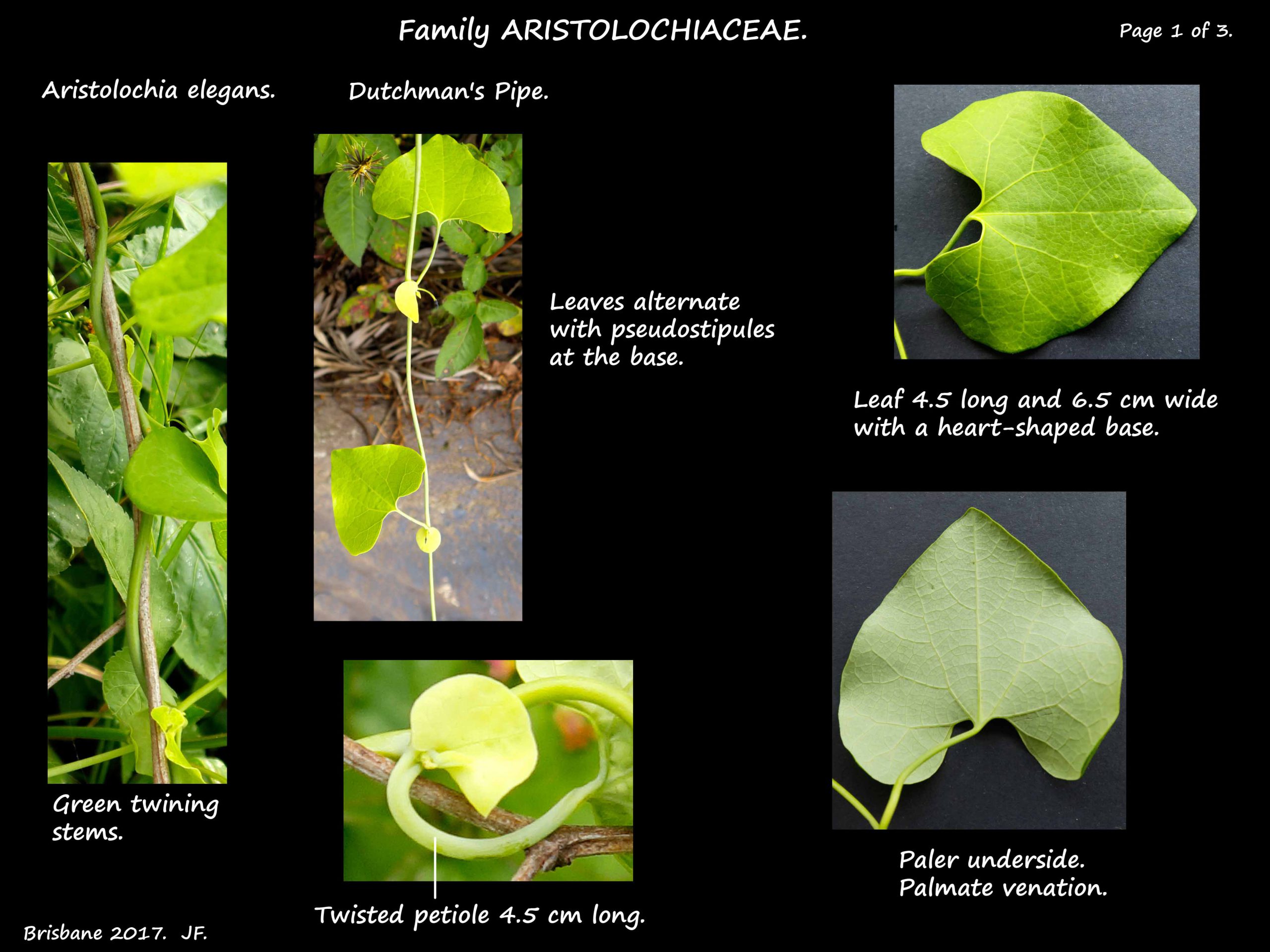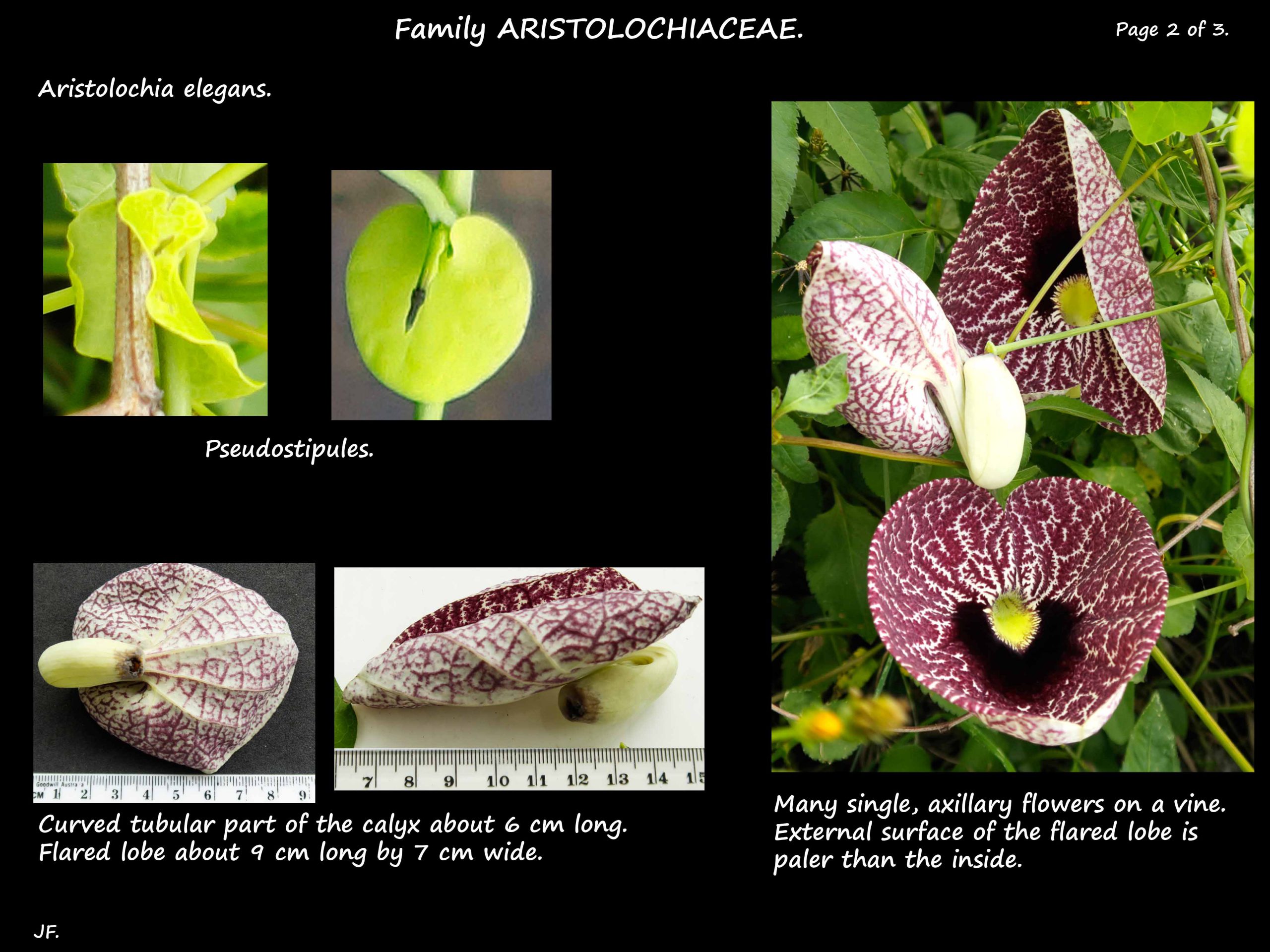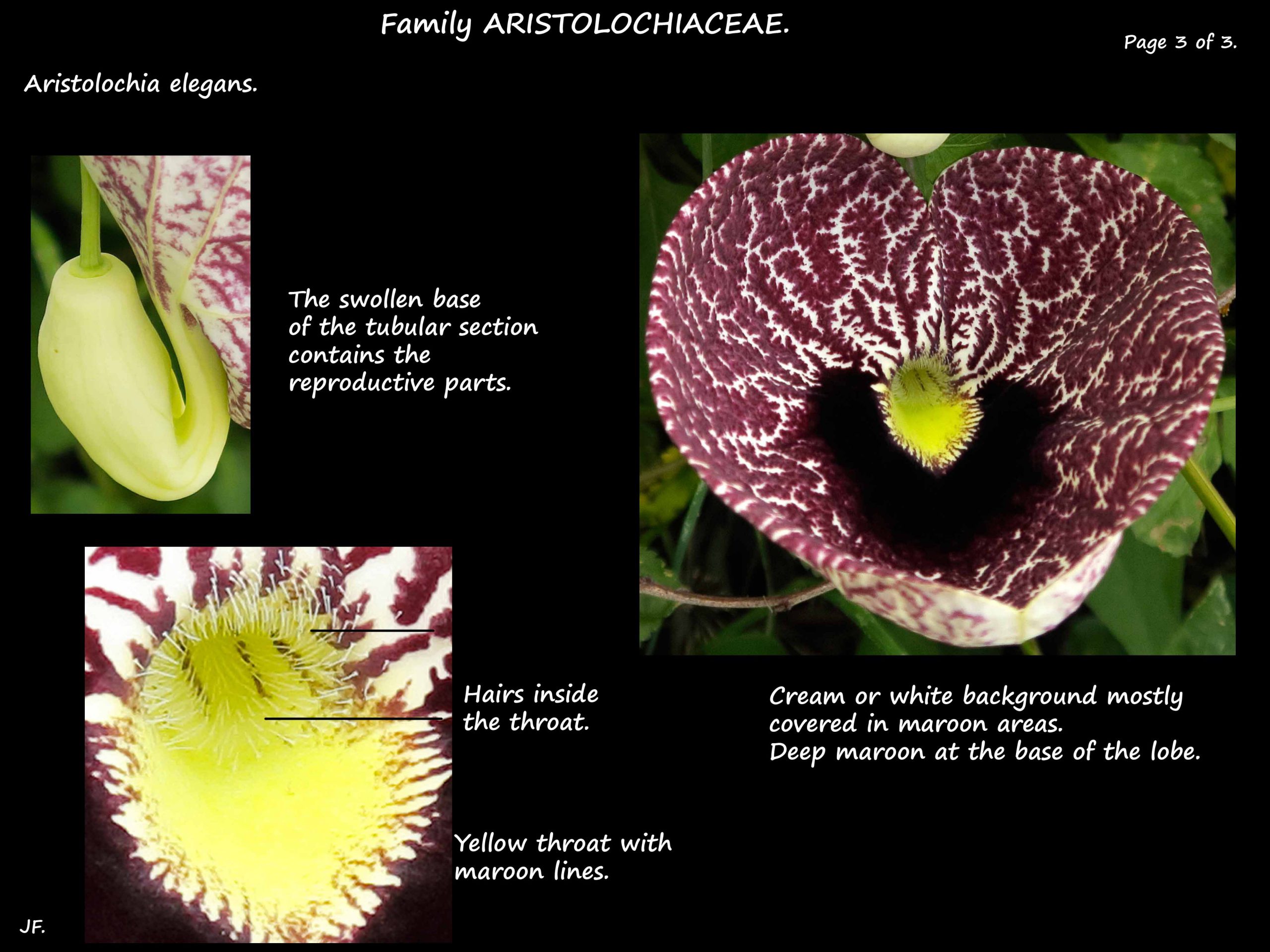Aristolochia elegans.
Dutchman’s Pipe is in Family Aristolochiaceae.
Most sources regard Aristolochia littoralis as a synonym.
A few take A. elegans as the synonym or say they are separate species.
The Dutchman’s Pipe or Calico vine is naturalised in S. E. Queensland.
It is an environmental weed as it can smother native vegetation.
It is a fast growing vine climbing by stem twining.
The slender stems can be 7 to 10 m long.
Older stems may become woody.
With no supports it just grows over vegetation up to 4 m high.
The alternately arranged leaves are on twisted petioles up to 5 cm long.
Triangular, heart or kidney-shaped leaves are up to 10 cm long and 12 cm wide.
The smooth upper surface is bright green and the lower surface is paler.
Venation is palmate and prominent underneath.
Around the base of the leaf stalks is a kidney-shaped, leaf-like pseudostipule.
It is deciduous and up to 3 cm long and wide.
The solitary, drooping, axillary flowers are on stalks up to 7 or 10 cm long.
They have no petals but a large, coloured petaloid calyx.
They are said to resemble a meerschaum smoking pipe.
The flowers may be hidden by the foliage.
The proximal part or perianth tube is curved back along itself.
It is pale cream with greenish veins and each section is about 3.5 cm long.
The very base is slightly swollen and encloses the reproductive organs.
The throat is yellow inside with hairs.
Where the limb flares out abruptly from the tube the inside is a deep maroon.
The broadly ovate, flaring limb is up to 8 cm long and 8 to 10 cm across at the top.
It is cream but mostly covered with maroon blotches giving the appearance of a
maroon limb with shortly-branched, white lines.
The similar pattern externally is fainter.
The hairs in the throat allow pollinating insects into the tube where it holds them.
On the first day the flies etc. deposit pollen from other flowers.
The next day it receives pollen from this flower then the hairs wither so the fly can escape.
The fruit are cylindrical or oblong capsules 4 to 6 cm long by 2.5 cm wide.
They have 5 or 6 longitudinal ribs and a projection to 1 cm long at the tip.
They ripen from green to brown and open, along the ribs, from the top down.
There are over 300 flat brown seeds with 2 wings.
J.F.




